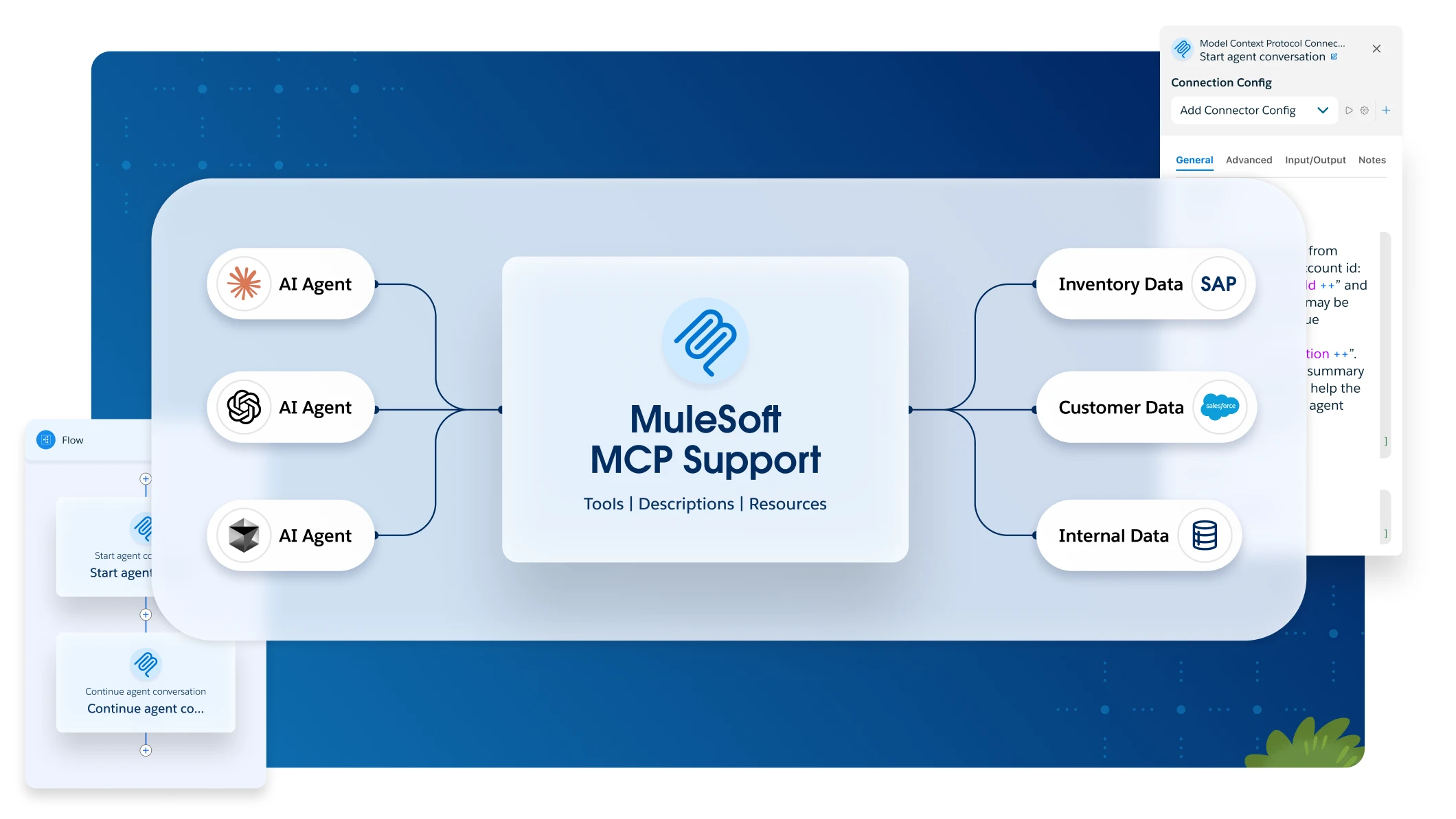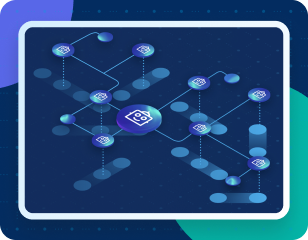<dependency>
<groupId>com.mulesoft.connectors</groupId>
<artifactId>mule-microsoft-dynamics-crm-connector</artifactId>
<version>x.x.x</version>
<classifier>mule-plugin</classifier>
</dependency>Microsoft Dynamics CRM Connector 3.2
Anypoint Connector for Microsoft Dynamics CRM enables Mule apps to interact with Microsoft Dynamics CRM’s SOAP Organization Service.
For compatibility information and fixed issues, see the release notes.
Before You Begin
To use this connector, you must be familiar with:
-
Microsoft Dynamics CRM API
-
Anypoint Connectors
-
Mule runtime engine (Mule)
-
Elements and global elements in a Mule flow
-
How to create a Mule app using Anypoint Studio (Studio)
Before creating an app, you must have login credentials for Microsoft Dynamics CRM SOAP Organization Service to test your connection to your target resource.
Any created or expired date in the Web service header created by the Microsoft CRM instance must conform to the constraints specified in the Basic Security Profile validation for Web services, http://www.ws-i.org/Profiles/BasicSecurityProfile-1.0.html, as summarized below:
-
A created or expired date must not contain a seconds value with more than three digits to the right of the decimal (milliseconds).
-
A created or expired date that contains a seconds value must specify a seconds value less than 60.
-
A created or expired date must not include the ValueType attribute.
-
A created or expired date must contain time values in UTC format, as specified by the XML Schema type (dateTime).
Add a POM File Depedency
Replace x.x.x with the version that corresponds to the connector you are using.
To obtain the most up-to-date pom.xml file information:
-
Go to Anypoint Exchange.
-
In Exchange, click Login and supply your Anypoint Platform username and password.
-
In Exchange, search for
<connector-name>. -
Select the connector.
-
Click Dependency Snippets near the upper right of the screen.
Add the Connector to a Studio Project
Anypoint Studio provides two ways to add the connector to your Studio project: from the Exchange button in the Studio taskbar or from the Mule Palette view.
-
In Studio, create a Mule project.
-
In the Mule Palette view, click (X) Search in Exchange.
-
In Add Modules to Project, type
crmin the search field. -
Click this connector’s name in Available modules.
-
Click Add.
-
Click Finish.
Configure the Connector in Studio
-
Drag the connector to the Studio Canvas.
-
To create a global element for the connector, set these fields:
Online Authentication (Default):
-
Username: Enter the Dynamics CRM username.
-
Password: Enter the corresponding password.
-
Organization Service URL: Enter the corresponding organization service URL.
-
Authentication retries: Enter the desired number of retries for authentication.
-
Disable cn check: Choose if you want to bypass SSL Certificates.

-
Use Case - Microsoft Dynamics CRM Operations Demo
This demo includes the following options:
-
Return all accounts:
http://localhost:8081/accounts -
Query accounts by name containing a substring:
http://localhost:8081/query-accounts?name=li -
Create a new account with the specified name:
http://localhost:8081/create-account?name=your-account-name -
Retrieve account by ID:
http://localhost:8081/retrieve-account?accountid={account-guid} -
Delete an account:
http://localhost:8081/delete-account?accountid={account-guid} -
Return all contacts:
http://localhost:8081/contacts -
Return all contacts for an account:
http://localhost:8081/contacts-by-account?accountid={account-guid} -
Associate a contact to an account:
http://localhost:8081/associate?accountid={account-guid}&contactid={contact-guid} -
Disassociate a contact from an account:
http://localhost:8081/disassociate?accountid={account-guid}&contactid={contact-guid} -
Create an opportunity:
http://localhost:8081/create-opportunity?accountid={account-guid}&contactid={contact-guid} -
Query opportunities by parent account:
http://localhost:8081/opportunities-by-account?accountid={account-guid} -
Activate an account by executing the
SetStateoperation:http://localhost:8081/activate-account?accountid={account-guid} -
Deactivate an account by executing the
SetStateoperation:http://localhost:8081/deactivate-account?accountid={account-guid} -
Create multiple entities in a single request:
http://localhost:8081/create-multiple -
Update the property 'Description' of multiple contacts in a single request:
http://localhost:8081/update-multiple -
Retrieve updated contacts:
http://localhost:8081/updated-contacts -
Delete multiple contacts in a single request:
http://localhost:8081/delete-multiple
Use Case XML Flow
<?xml version="1.0" encoding="UTF-8"?>
<mule xmlns:ee="http://www.mulesoft.org/schema/mule/ee/core"
xmlns:microsoft-dynamics-crm="http://www.mulesoft.org/schema/mule/microsoft-dynamics-crm"
xmlns:http="http://www.mulesoft.org/schema/mule/http"
xmlns="http://www.mulesoft.org/schema/mule/core"
xmlns:doc="http://www.mulesoft.org/schema/mule/documentation"
xmlns:xsi="http://www.w3.org/2001/XMLSchema-instance"
xsi:schemaLocation="http://www.mulesoft.org/schema/mule/core
http://www.mulesoft.org/schema/mule/core/current/mule.xsd
http://www.mulesoft.org/schema/mule/http
http://www.mulesoft.org/schema/mule/http/current/mule-http.xsd
http://www.mulesoft.org/schema/mule/microsoft-dynamics-crm
http://www.mulesoft.org/schema/mule/microsoft-dynamics-crm/current/mule-microsoft-dynamics-crm.xsd
http://www.mulesoft.org/schema/mule/ee/core http://www.mulesoft.org/schema/mule/ee/core/current/mule-ee.xsd">
<configuration-properties file="mule-app.properties"/>
<http:listener-config
name="HTTP_Listener_config"
doc:name="HTTP Listener config" >
<http:listener-connection
host="localhost"
port="8081" />
</http:listener-config>
<microsoft-dynamics-crm:dynamics-crm-config
name="Microsoft_Dynamics_CRM_Dynamics_CRM"
doc:name="Microsoft Dynamics CRM Dynamics CRM" >
<microsoft-dynamics-crm:online-connection
username="${username}"
password="${password}"
organizationServiceUrl="${organizationServiceUrl}"
authenticationRetries="${authenticationRetries}" />
</microsoft-dynamics-crm:dynamics-crm-config>
<flow name="crm-all-accounts" >
<http:listener
doc:name="Listener"
config-ref="HTTP_Listener_config"
path="/accounts"/>
<microsoft-dynamics-crm:retrieve-multiple-by-query
doc:name="Retrieve multiple by query"
config-ref="Microsoft_Dynamics_CRM_Dynamics_CRM">
<microsoft-dynamics-crm:query ><![CDATA[dsql:SELECT accountid,name,statecode,statuscode FROM account]]></microsoft-dynamics-crm:query>
</microsoft-dynamics-crm:retrieve-multiple-by-query>
<ee:transform doc:name="Transform Message" >
<ee:message >
<ee:set-payload ><![CDATA[%dw 2.0
output application/json
---
payload]]></ee:set-payload>
</ee:message>
</ee:transform>
</flow>
<flow name="crm-query-account-by-name" >
<http:listener
doc:name="Listener"
config-ref="HTTP_Listener_config"
path="/query-accounts"/>
<ee:transform doc:name="Transform Message" >
<ee:message >
<ee:set-payload ><![CDATA[%dw 2.0
output application/json
---
{
"query" : "dsql:SELECT accountid,name,statecode,statuscode FROM account WHERE name LIKE '%" ++ attributes.queryParams.name ++ "%'"
}]]></ee:set-payload>
</ee:message>
</ee:transform>
<microsoft-dynamics-crm:retrieve-multiple-by-query
doc:name="Retrieve multiple by query"
config-ref="Microsoft_Dynamics_CRM_Dynamics_CRM">
<microsoft-dynamics-crm:query ><![CDATA[#[payload.query]]]></microsoft-dynamics-crm:query>
</microsoft-dynamics-crm:retrieve-multiple-by-query>
<ee:transform doc:name="Transform Message" >
<ee:message >
<ee:set-payload ><![CDATA[%dw 2.0
output application/json
---
payload]]></ee:set-payload>
</ee:message>
</ee:transform>
</flow>
<flow name="crm-create-account" >
<http:listener
doc:name="Listener"
config-ref="HTTP_Listener_config"
path="/create-account"/>
<ee:transform doc:name="Transform Message" >
<ee:message >
<ee:set-payload ><![CDATA[%dw 2.0
output application/json
---
{
"name": attributes.queryParams.name
}]]></ee:set-payload>
</ee:message>
</ee:transform>
<microsoft-dynamics-crm:create
logicalName="account"
doc:name="Create"
config-ref="Microsoft_Dynamics_CRM_Dynamics_CRM"/>
<ee:transform doc:name="Transform Message" >
<ee:message >
<ee:set-payload ><![CDATA[%dw 2.0
output application/json
---
payload]]></ee:set-payload>
</ee:message>
</ee:transform>
</flow>
<flow name="crm-delete-account"
config-ref="HTTP_Listener_config"
path="/delete-account"/>
<microsoft-dynamics-crm:delete
logicalName="account"
id="#[attributes.queryParams.accountid]"
doc:name="Delete"
config-ref="Microsoft_Dynamics_CRM_Dynamics_CRM" />
</flow>
<flow name="crm-retrieve-account" >
<http:listener
doc:name="Listener"
config-ref="HTTP_Listener_config"
path="/retrieve-account"/>
<microsoft-dynamics-crm:retrieve
logicalName="account"
id="#[attributes.queryParams.accountid]"
doc:name="Retrieve"
config-ref="Microsoft_Dynamics_CRM_Dynamics_CRM" />
<ee:transform doc:name="Transform Message" >
<ee:message >
<ee:set-payload ><![CDATA[%dw 2.0
output application/json
---
payload]]></ee:set-payload>
</ee:message>
</ee:transform>
</flow>
<flow name="crm-all-contacts" >
<http:listener
doc:name="Listener"
config-ref="HTTP_Listener_config"
path="/contacts"/>
<microsoft-dynamics-crm:retrieve-multiple-by-query
doc:name="Retrieve multiple by query"
config-ref="Microsoft_Dynamics_CRM_Dynamics_CRM">
<microsoft-dynamics-crm:query ><![CDATA[dsql:SELECT accountid,contactid,firstname,lastname FROM contact]]></microsoft-dynamics-crm:query>
</microsoft-dynamics-crm:retrieve-multiple-by-query>
<ee:transform doc:name="Transform Message" >
<ee:message >
<ee:set-payload ><![CDATA[%dw 2.0
output application/json
---
payload]]></ee:set-payload>
</ee:message>
</ee:transform>
</flow>
<flow name="crm-get-associated-contacts" >
<http:listener doc:name="Listener"
config-ref="HTTP_Listener_config"
path="/contacts-by-account"/>
<ee:transform doc:name="Transform Message" >
<ee:message >
<ee:set-payload ><![CDATA[%dw 2.0
output application/json
---
{
"query" : "dsql:SELECT contactid, accountidname, parentcustomerid_referenceto_account FROM contact WHERE parentcustomerid_referenceto_account = '" ++ attributes.queryParams.accountid ++ "'"
}]]></ee:set-payload>
</ee:message>
</ee:transform>
doc:name="Retrieve multiple by query"
config-ref="Microsoft_Dynamics_CRM_Dynamics_CRM">
<microsoft-dynamics-crm:query ><![CDATA[#[payload.query]]]></microsoft-dynamics-crm:query>
</microsoft-dynamics-crm:retrieve-multiple-by-query>
<ee:transform doc:name="Transform Message" >
<ee:message >
<ee:set-payload ><![CDATA[%dw 2.0
output application/json
---
payload]]></ee:set-payload>
</ee:message>
</ee:transform>
</flow>
<flow name="crm-associate-contact-to-account" >
<http:listener
doc:name="Listener"
config-ref="HTTP_Listener_config"
path="/associate"/>
<ee:transform doc:name="Transform Message" >
<ee:message >
<ee:set-payload ><![CDATA[%dw 2.0
output application/java
---
[
attributes.queryParams.contactid
]]]></ee:set-payload>
</ee:message>
</ee:transform>
<microsoft-dynamics-crm:associate
logicalName="account"
relatedEntitiesIds="#[payload]"
doc:name="Associate"
config-ref="Microsoft_Dynamics_CRM_Dynamics_CRM"
relationshipSchemaName="contact_customer_accounts"
id="#[attributes.queryParams.accountid]"
relationshipEntityRoleIsReferenced="true"/>
</flow>
<flow name="crm-disassociate-contact-to-account" >
<http:listener doc:name="Listener"
config-ref="HTTP_Listener_config"
path="/disassociate"/>
<ee:transform doc:name="Transform Message" >
<ee:message >
<ee:set-payload ><![CDATA[%dw 2.0
output application/java
---
[
attributes.queryParams.contactid
]]]></ee:set-payload>
</ee:message>
</ee:transform>
<microsoft-dynamics-crm:disassociate
doc:name="Disassociate"
config-ref="Microsoft_Dynamics_CRM_Dynamics_CRM"
logicalName="account"
id="#[attributes.queryParams.accountid]"
relationshipEntityRoleIsReferenced="true"
relationshipSchemaName="contact_customer_accounts"
relatedEntitiesIds="#[payload]"/>
</flow>
<flow name="crm-get-opportunities" >
<http:listener doc:name="Listener"
config-ref="HTTP_Listener_config"
path="/opportunities-by-account"/>
<ee:transform doc:name="Transform Message" >
<ee:message >
<ee:set-payload ><![CDATA[%dw 2.0
output application/json
---
{
"query" : "dsql:SELECT accountid_referenceto_account,accountidname,customerid_referenceto_contact,name,parentaccountid_referenceto_account FROM opportunity WHERE parentaccountid_referenceto_account = '" ++ attributes.queryParams.accountid ++ "'"
}]]></ee:set-payload>
</ee:message>
</ee:transform>
<microsoft-dynamics-crm:retrieve-multiple-by-query
doc:name="Retrieve multiple by query"
config-ref="Microsoft_Dynamics_CRM_Dynamics_CRM">
<microsoft-dynamics-crm:query ><![CDATA[#[payload.query]]]></microsoft-dynamics-crm:query>
</microsoft-dynamics-crm:retrieve-multiple-by-query>
<ee:transform doc:name="Transform Message" >
<ee:message >
<ee:set-payload ><![CDATA[%dw 2.0
output application/json
---
payload]]></ee:set-payload>
</ee:message>
</ee:transform>
</flow>
<flow name="crm-create-opportunity" >
<http:listener
doc:name="Listener"
config-ref="HTTP_Listener_config"
path="/create-opportunity"/>
<ee:transform doc:name="Transform Message" >
<ee:message >
<ee:set-payload ><![CDATA[%dw 2.0
output application/json
---
{
"parentaccountid_referenceto_account": attributes.queryParams.accountid,
"contactid_referenceto_contact": attributes.queryParams.contactid,
"name": "unique opportunity",
"timeline": 2
}]]></ee:set-payload>
</ee:message>
</ee:transform>
<microsoft-dynamics-crm:create
logicalName="opportunity"
doc:name="Create"
config-ref="Microsoft_Dynamics_CRM_Dynamics_CRM"/>
<ee:transform doc:name="Transform Message" >
<ee:message >
<ee:set-payload ><![CDATA[%dw 2.0
output application/json
---
payload]]></ee:set-payload>
</ee:message>
</ee:transform>
</flow>
<flow name="crm-execute-activate-account" >
<http:listener
doc:name="Listener"
config-ref="HTTP_Listener_config"
path="/activate-account"/>
<ee:transform doc:name="Transform Message" >
<ee:message >
<ee:set-payload ><![CDATA[%dw 2.0
output application/java
---
{
"entityMoniker": {
"id": {
"value": attributes.queryParams.accountid,
},
"logicalName": "account"
},
"state": {
"value": 0
},
"status": {
"value": 1
}
}]]></ee:set-payload>
</ee:message>
</ee:transform>
<microsoft-dynamics-crm:execute
requestName="SetState" doc:name="Execute"
config-ref="Microsoft_Dynamics_CRM_Dynamics_CRM"/>
<ee:transform doc:name="Transform Message" >
<ee:message >
<ee:set-payload ><![CDATA[%dw 2.0
output application/json
---
payload]]></ee:set-payload>
</ee:message>
</ee:transform>
</flow>
<flow name="crm-execute-deactivate-account" >
<http:listener
doc:name="Listener"
config-ref="HTTP_Listener_config"
path="/deactivate-account"/>
<ee:transform doc:name="Transform Message" >
<ee:message >
<ee:set-payload ><![CDATA[%dw 2.0
output application/java
---
{
"entityMoniker": {
"id": {
"value": attributes.queryParams.accountid,
},
"logicalName": "account"
},
"state": {
"value": 1
},
"status": {
"value": 2
}
}]]></ee:set-payload>
</ee:message>
</ee:transform>
<microsoft-dynamics-crm:execute
doc:name="Execute"
config-ref="Microsoft_Dynamics_CRM_Dynamics_CRM"
requestName="SetState"/>
<ee:transform doc:name="Transform Message" >
<ee:message >
<ee:set-payload ><![CDATA[%dw 2.0
output application/json
---
payload]]></ee:set-payload>
</ee:message>
</ee:transform>
</flow>
<flow name="crm-create-multiple-contacts" >
<http:listener
doc:name="Listener"
config-ref="HTTP_Listener_config"
path="/create-multiple"/>
<ee:transform doc:name="Transform Message" >
<ee:message >
<ee:set-payload ><![CDATA[%dw 2.0
output application/json
---
[
{
"fullname":"Contact1",
"address1_city":"DemoCity",
"description":"Demo contact 1"
},
{
"fullname":"Contact2",
"address1_city":"DemoCity",
"description":"Demo contact 2"
},
{
"fullname":"Contact3",
"address1_city":"DemoCity",
"description":"Demo contact 3"
}
]]]></ee:set-payload>
</ee:message>
</ee:transform>
<microsoft-dynamics-crm:create-multiple
logicalName="contact"
doc:name="Create multiple"
config-ref="Microsoft_Dynamics_CRM_Dynamics_CRM"/>
<ee:transform doc:name="Transform Message" >
<ee:message >
<ee:set-payload ><![CDATA[%dw 2.0
output application/json
---
payload]]></ee:set-payload>
</ee:message>
</ee:transform>
</flow>
<flow name="crm-delete-multiple" >
<http:listener
doc:name="Listener"
config-ref="HTTP_Listener_config"
path="/delete-multiple"/>
<microsoft-dynamics-crm:retrieve-multiple-by-query
doc:name="Retrieve multiple by query"
config-ref="Microsoft_Dynamics_CRM_Dynamics_CRM">
<microsoft-dynamics-crm:query ><![CDATA[dsql:SELECT contactid FROM contact WHERE address1_city = 'DemoCity']]></microsoft-dynamics-crm:query>
</microsoft-dynamics-crm:retrieve-multiple-by-query>
<ee:transform doc:name="Transform Message" >
<ee:message >
<ee:set-payload ><![CDATA[%dw 2.0
output application/java
---
payload.*contactid
]]></ee:set-payload>
</ee:message>
</ee:transform>
<microsoft-dynamics-crm:delete-multiple
logicalName="contact"
ids="#[payload]"
doc:name="Delete multiple"
config-ref="Microsoft_Dynamics_CRM_Dynamics_CRM"/>
<ee:transform doc:name="Transform Message" >
<ee:message >
<ee:set-payload ><![CDATA[%dw 2.0
output application/json
---
payload]]></ee:set-payload>
</ee:message>
</ee:transform>
</flow>
<flow name="crm-update-multiple-contacts" >
<http:listener
doc:name="Listener"
config-ref="HTTP_Listener_config"
path="/update-multiple"/>
<microsoft-dynamics-crm:retrieve-multiple-by-query
doc:name="Retrieve multiple by query"
config-ref="Microsoft_Dynamics_CRM_Dynamics_CRM">
<microsoft-dynamics-crm:query ><![CDATA[dsql:SELECT contactid,description FROM contact WHERE address1_city = 'DemoCity']]></microsoft-dynamics-crm:query>
</microsoft-dynamics-crm:retrieve-multiple-by-query>
<ee:transform doc:name="Transform Message" >
<ee:message >
<ee:set-payload ><![CDATA[%dw 2.0
output application/java
---
updates: payload map (item, index) -> {
"contactid" : item.contactid,
"description" : "Updated Description"
}]]></ee:set-payload>
</ee:message>
</ee:transform>
<microsoft-dynamics-crm:update-multiple
logicalName="contact"
doc:name="Update multiple"
config-ref="Microsoft_Dynamics_CRM_Dynamics_CRM">
<microsoft-dynamics-crm:list-of-attributes ><![CDATA[#[payload.updates]]]></microsoft-dynamics-crm:list-of-attributes>
</microsoft-dynamics-crm:update-multiple>
<ee:transform doc:name="Transform Message" >
<ee:message >
<ee:set-payload ><![CDATA[%dw 2.0
output application/json
---
payload]]></ee:set-payload>
</ee:message>
</ee:transform>
</flow>
<flow name="crm-retrieve-update-contacts" >
<http:listener
doc:name="Listener"
config-ref="HTTP_Listener_config"
path="/updated-contacts"/>
<microsoft-dynamics-crm:retrieve-multiple-by-query
doc:name="Retrieve multiple by query"
config-ref="Microsoft_Dynamics_CRM_Dynamics_CRM">
<microsoft-dynamics-crm:query ><![CDATA[dsql:SELECT contactid,description FROM contact WHERE address1_city = 'DemoCity']]></microsoft-dynamics-crm:query>
</microsoft-dynamics-crm:retrieve-multiple-by-query>
<ee:transform doc:name="Transform Message" >
<ee:message >
<ee:set-payload ><![CDATA[%dw 2.0
output application/json
---
payload]]></ee:set-payload>
</ee:message>
</ee:transform>
</flow>
</mule>







